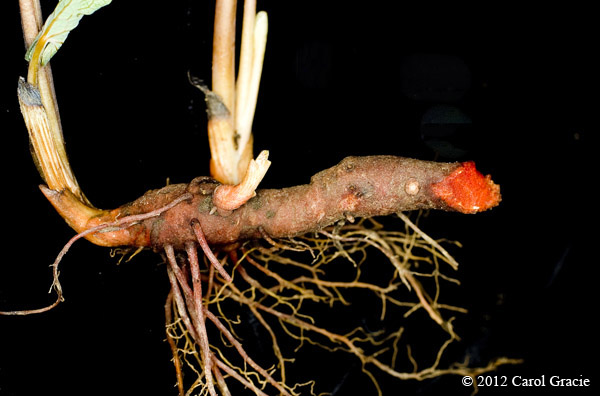Bloodroot: An Understandable Misnomer
Posted in Science on April 20 2013, by Carol Gracie
After spending nearly three decades at the NYBG, and working much of that time in South American rainforests with her husband, Scott A. Mori, Carol Gracie has returned to one of her first botanical interests in retirement–local wildflowers. She is the author of Spring Wildflowers of the Northeast: A Natural History and coauthor (with Steve Clemants) of Wildflowers in the Field and Forest: A Field Guide to the Northeastern United States.

Both the scientific name, Sanguinaria canadensis, and the common name, bloodroot, of this spring wildflower are descriptive. The generic name Sanguinaria has its roots in the Latin word for blood, and bloodroot describes the root-like rhizome of this plant, which contains a bright red sap. Like other members of the poppy family, Papaveraceae, the sap throughout the plant is colored, which may be seen by breaking a vein in the leaf with your fingernail.
